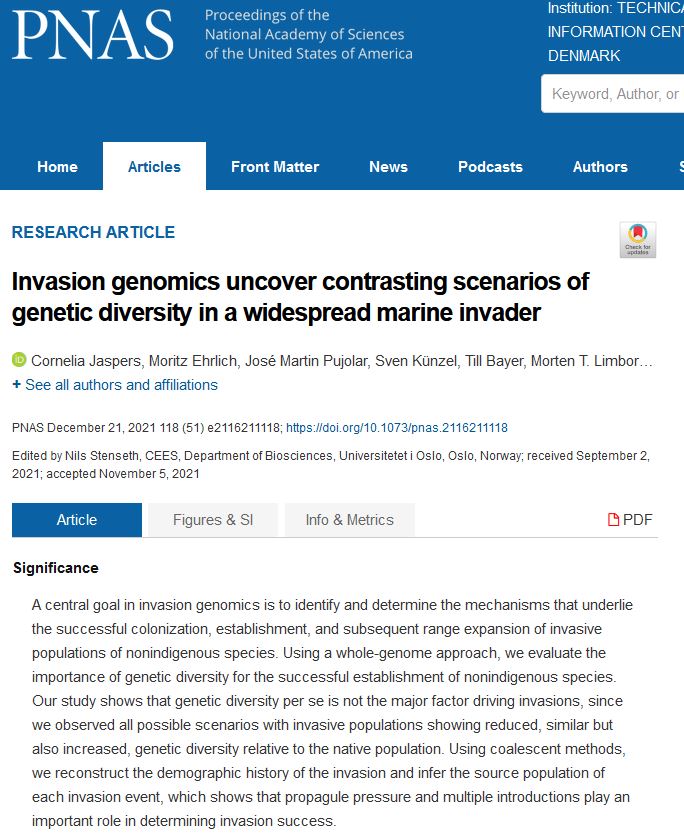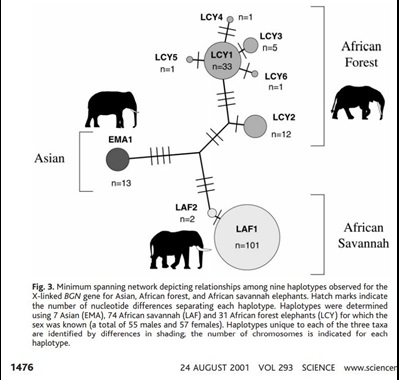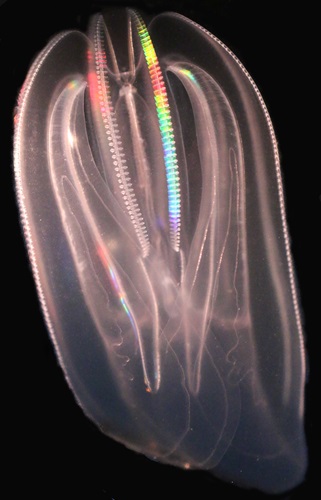Cover: Trends in Ecology and Evolution October issue

Larvaceans are among the most widespread gelatinous organisms of the zooplankton and have extraordinary growth rates, on the same time scale as that of their protozoan prey. Because they eat small phytoplankton that are predicted to become more prevalent under climate change, they may be able to moderate projected future declines in ocean productivity and fisheries. On pages 980–993, Cornelia Jaspers and colleagues argue that larvaceans need to be included in ecosystem assessments and biogeochemical models to improve predictions of future ocean conditions. Pictured is a gravid female Oikopleura dioica, a small pelagic tunicate. Photo credit: Anne Aasjord, Michael Sars Centre, Norway.
link
New: Jaspers et al. (2023) The role of gelatinous larvacean zooplankton in Trends in Ecology & Evolution

link - article
Invited plenary keynote: Jellyfish Blooms Symposium JBS7, Kerala, India 21-25.9.2023 - Cornelia Jaspers

link
Invited keynote: ASLO Aquatic Science Meeting, Palma de Mallorca, Spain 4.9.2023 - Cornelia Jaspers
@ session 56 Jellyfish in the Changing Ocean
link
Podcast death and survival (interview with Dr. Jaspers about death in Jellyfish)
To be broadcasted 15.12.2022 on WDR: Erlebnis Erde – Eure Tierdoku zum Hören in ARDaudiohek
link
Invited plenary keynote: ICES Annual Science Conference, Dublin, Ireland 20.9.2022 - Cornelia Jaspers

Link to recording
Link to ICES ASC
Link to News
Special M.Sc. & Ph.D course: Approaches to predict adaptive responses of biota to global change & Career
Thursday 29th of September 2022 14:30-18:30
Otto Mønsted guest Prof. Hans Dam from University of Connecticut, USA is an outstanding expert on experimental evolution studies in marine organisms. He engaged in large scale, multigenerational experiments to understand how the food web structure of the ocean might change facing multiple stressors, especially considering the structuring effect of toxin producing algae, which commonly form blooms (harmful algae blooms, HABs). HABs is an old phenomenon, which has recently become accelerated supposedly due to global change pressures, with large ranging consequences for marine food webs. HAB poste an important stressors on marine food webs, which gained large public attention during recent years. In this half day course, open to all interested students, post docs and younger researchers, Hans Dam will outline general concepts and approaches necessary to be able to predict adaptive responses of marine life to global change pressures. This emerging research field will be presented and followed by a session on how to realistically shape your career plan & ambitions, how to fund your research career and a round-table discussion with career insights from researchers from the EU and US, followed by networking dinner with beer and pizza.
Guest: Otto Mønsted Professor Hans Dam, University of Connecticut, USA – DTU Aqua
Organizer: Cornelia Jaspers, Centre for Gelatinous Plankton Ecology & Evolution, DTU Aqua (coja@aqua.dtu.dk)
Sponsored by: Otto Mønsteds Fond & Villum Fonden
Link
Novel with Scientific content about Mnemiopsis leidyi by Maria Gamillscheg, Luchterhand Literaturverlag Munich, Germany, 8.3.2022
Scientific advisor: Cornelia Jaspers, DTU Aqua
ISBN: 978-3-630-87562-0
ASC Key-note lecture at the 2022 ICES Annual Science Conference (ASC) 19.-22. Sept. 2022 Dublin, Ireland.
Cornelia Jaspers, DTU Aqua: Marine ecosystems under change: Do we face a more gelatinous future?
link
New Paper published in PNAS
Invasion dynamics of the non-indigenous comb jelly Mnemiopsis leidyi uncovered via whole genome analyses by Jaspers et al.

Alfred L. Roca from University of Illinois, Genomics Research Laboratory, USA
8.12.2021 at 11:00 seminar on 'Conservation genetics of African forest and savanna elefants' (sign up if you want to participate via zoom or in person).
Conservation genetics of African forest and savanna elephants: Various lines of evidence indicate that African savanna elephants and African forest elephants comprise separate species; their divergence is comparable to that between Asian elephants and mammoths. Genomic studies have indicated that substantial gene flow does not occur between the two African species. In all elephant species, males disperse whereas females remain with their natal social group, leading to discordance in the phylogeography of nuclear and mitochondrial DNA patterns. DNA-based methods are being developed to determine the geographic provenance of confiscated ivory in an effort to aid the conservation of elephants.


We are looking forward to welcome Prof. Hans Dam from University of Connecticut, Groton CT, USA. He will be visiting for 3 months in summer 2022.

link
